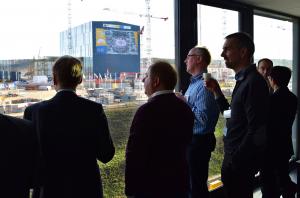Tokamaks of the world, contribute!
The annual end-of-year meeting of the International Tokamak Physics Activity (ITPA) was held at ITER Headquarters from 6 to 8 December.
There are dozens of tokamaks operating around the world and many regularly give direct support to ITER design activities and operational planning. The ITPA allows the global coordination of these research laboratories, helping with the exchange of people and ideas, including the clear communication of ITER priorities.
Director-General Bigot opened the meeting with a warm welcome that outlined the staged approach to assembling ITER, progress in construction, the successful completion of 2016 milestones, and general efforts to maximize the efficiency of the organization. The meeting was smooth and productive. Results from the past year were reviewed and the proposed activities for 2017 were discussed.
There was a change of leadership at the end of the three-day session, with ITPA Chairman Abhijit Sen of the Institute for Plasma Research in India completing a successful three-year term. His responsibilities were passed to Sergey Konovalov of the Kurchatov Institute in Russia, who reaffirmed the contributions made by the ITPA and spoke positively about the high level of coordination with ITER.



